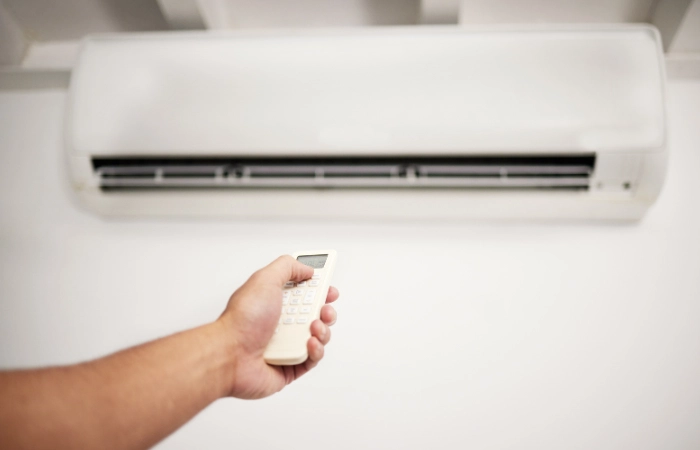What is vent mode in air conditioner, and why is it so important? When it comes to keeping your indoor environment comfortable and healthy, understanding the features of your air conditioner is crucial. One often overlooked feature is the vent mode.
In this article, we will explore the concept of vent mode, which allows fresh outside air to enter your room without cooling or heating it. We’ll also delve into seven reasons why using this mode can enhance energy efficiency, improve air quality, and provide numerous other benefits, making it an essential feature for a well-maintained and comfortable home.
What Is Vent Mode in Air Conditioner?
Vent mode in an air conditioner allows fresh outside air to enter the room without cooling or heating it. This mode circulates outdoor air through the unit, which can help improve indoor air quality by reducing stale air and odors. It’s useful in moderate weather when cooling or heating isn’t needed. Vent mode is often controlled by a switch or button labeled “vent” or “fresh air” and may not be available on all air conditioner models.
7 Reasons Why Vent Mode in Air Conditioner Is Important
There are several reasons why utilizing the vent mode in an air conditioner is essential for maintaining a comfortable and healthy indoor environment. Below are seven key explanations that highlight the importance of this feature.
1. Energy Efficiency
Vent mode allows the air conditioner to circulate air without using the compressor, which significantly reduces energy consumption. This mode is especially useful during mild weather when cooling isn’t necessary. By using less power, you can lower electricity bills and reduce your carbon footprint, making your home more energy-efficient and environmentally friendly.
2. Improved Air Quality
Using vent mode can help enhance indoor air quality by distributing and filtering the air within the space. This process helps remove dust, allergens, and pollutants, leading to a healthier living environment. For individuals with respiratory issues or allergies, better air circulation can alleviate symptoms and improve overall well-being, ensuring a cleaner and fresher indoor atmosphere.
3. Humidity Control
Vent mode assists in maintaining optimal indoor humidity levels by promoting air circulation. It helps prevent the buildup of moisture, which can lead to mold growth and other humidity-related problems. By keeping the indoor air dry and comfortable, vent mode ensures a healthier living space and protects your home from probable damage caused by excessive humidity.
4. Temperature Balance
This mode helps in distributing air evenly throughout the room, preventing hot or cold spots. By maintaining a consistent temperature, it enhances overall comfort and ensures that the entire space is uniformly cooled or heated as needed. This even distribution of air helps create a more comfortable and pleasant environment, making every corner of the room enjoyable.
5. Odor Removal
Vent mode aids in eliminating unpleasant odors from the room by continuously circulating and refreshing the air. This can be particularly useful in kitchens, bathrooms, or any area where odors tend to linger. By keeping the air moving, vent mode helps to quickly disperse and remove unwanted smells, providing a fresher and more pleasant indoor atmosphere.
6. Extended Lifespan of the Unit
Operating the air conditioner in vent mode reduces the wear and tear on the compressor and other mechanical components. By minimizing the usage of these parts, the overall lifespan of the unit can be extended. This leads to fewer AC repairs and replacements over time, saving you money and ensuring your air conditioner remains reliable for longer.
7. Cost Savings
Utilizing vent mode can lead to substantial cost savings on energy bills and maintenance. By relying less on the compressor and more on simple air circulation, homeowners can reduce their operational costs. This more budget-friendly approach to climate control allows you to enjoy the benefits of a comfortable indoor environment without the high costs typically associated with running an air conditioner.
Frequently Asked Questions

Can vent mode be used in all types of air conditioners?
Vent mode is not available in all air conditioner models. It’s typically found in more advanced or feature-rich units. Always check the specifications of your air conditioner to see if it includes a vent mode option.
How do I know if my air conditioner is in vent mode?
Most air conditioners with vent mode have a labeled switch or button for this feature. When activated, the display might show an indicator, or you might feel a difference in airflow as the system draws in outside air without cooling or heating it.
Does using vent mode affect the air filter?
Yes, using vent mode can increase the workload on your air filter, as it has to handle more particulate matter from the outside air. An HVAC technician would recommend regularly checking and replacing the filter to maintain optimal air quality and system performance.
How does vent mode compare to using a window for ventilation?
Vent mode is more efficient and effective than simply opening a window. It provides controlled ventilation, often with filtration, reducing the intake of pollutants and allergens while maintaining better indoor temperature and humidity control. Additionally, regular AC maintenance ensures that the ventilation system continues to operate optimally, further enhancing air quality and system efficiency.
Conclusion
Understanding “what is vent mode in air conditioner” is key to enhancing your home’s comfort and efficiency. This feature improves air quality, controls humidity, and reduces energy costs, making it an essential aspect of modern air conditioning systems.
For top-notch AC installation, maintenance, and repair services in Sarasota, contact us at Tropic Air-Conditioning Inc. today. Our expert team is ready to ensure your home stays comfortable year-round.




